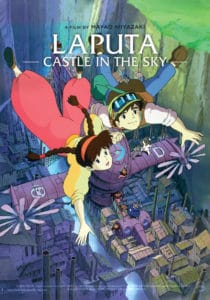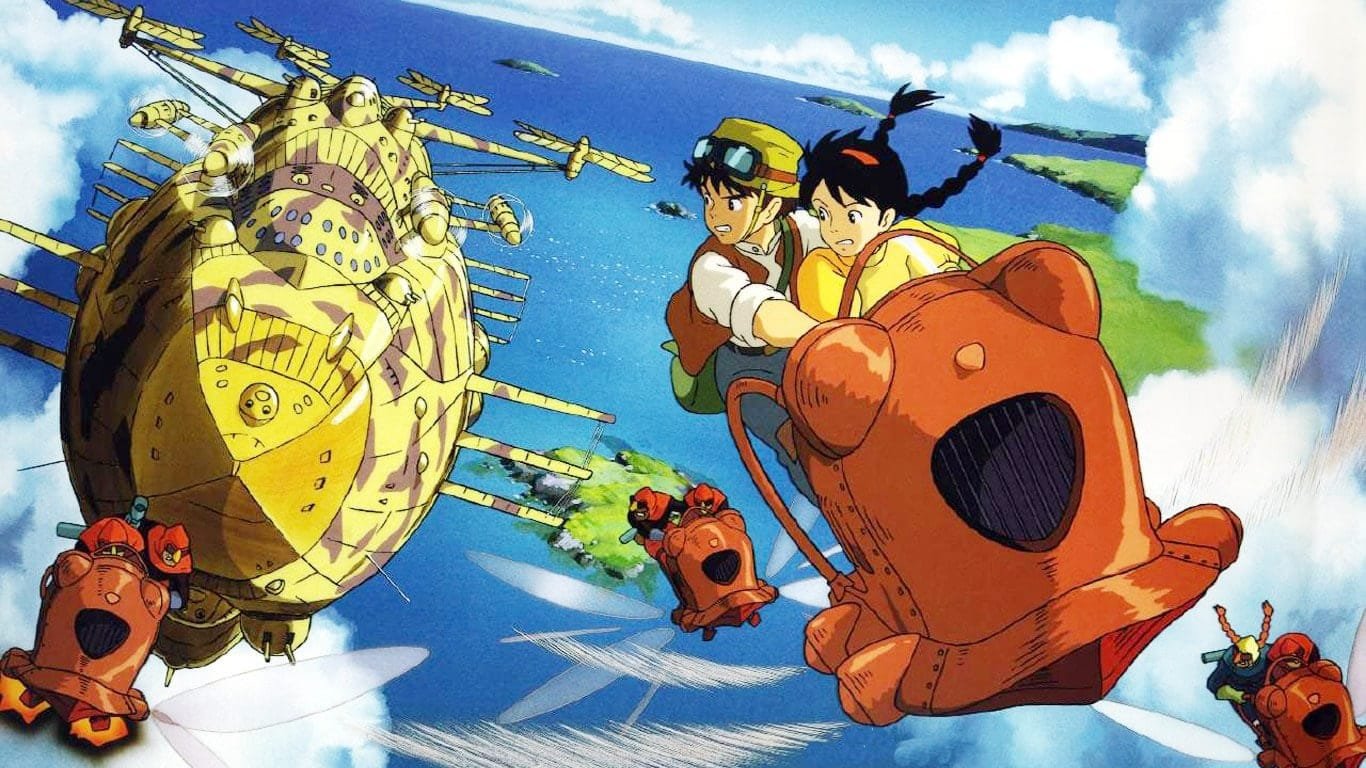It’s no secret that I’m a pretty big into anime and manga. I mean, not like ‘seen every episode of Dragon Ball Z’ big, but I know my way around the fandom. That being said, when I heard that my local theater was playing Studio Ghibli’s classic Laputa Castle in the Sky for a one-night only event, you better believe your cat ears that I put on my Ponyo shirt, grabbed my home-made Totoro toy and raced down to see it. Let me tell you, there is nothing like seeing a Studio Ghibli movie on the big screen and Laputa is definitely made to be watched in the largest format possible. With lush colors and sweeping animation, it’s easy to see why this movie became a classic among anime and animation fans alike.
Originally released in 1986, Laputa marked the cinematic debut of Studio Ghibli (though not Hayao Miyazaki’s debut, whose first movie was Toei Animation’s Lupin III: Castle of Cagliostro in 1979) and went on to set the standard for Ghibli’s animation output. Following its success, Ghibli managed to put out a new film at the MOST, every two years, with some years doing a double movie release. That’s a lot of movies for a film studio basically run out of a large house. But, I’m getting ahead of myself.

Laputa is a film set on an alternative Earth where flying machines, dirigibles, and steam power had become the standard by the late 1800s. Somewhere on this Earth exists the floating castle Laputa, a place that our lead, Pazu, is determined to find for himself. As he dreams about the flying piece of land, a girl named Sheeta suddenly crashes into his life by literally falling from the sky. With her arrival comes a whole flurry of trouble as her pursuers all hanker to get a gem that hangs around her neck. As Sheeta and Pazu get closer, Pazu learns that there’s much more to Sheeta than meets the eye and that she might just be the missing piece to finally get him to Laputa. That is, if the government and the pirates don’t get her first.
The movie, like most animated movies in the seventies, was completely hand drawn with hand painted backgrounds and meticulous movement quality, which makes the final product that much more awe inspiring. As each scene pans from one moment to the next, the viewer is completely entranced by the sheer amount of detail that went into the scenery. From Pazu’s hometown that was built into a cliff side to the expansive world of Laputa itself, they cut no corners when it came to vivid color work and the dream-like quality of this alternate earth. It looks like a world caught in a permanent setting sun; where the twilight illuminates the hills and technology of a place much like our own.
The story itself was pretty fun and I absolutely adored every character in it, from hero to villain. Even the minor characters, such as the pirate crew and the Laputa robots, each had a full personality and if they didn’t speak it, they definitely wore it on their faces. The robots are completely silent, but I’d be lying if I didn’t want a bunch of robot toys by the end of it. That being said, this movie is definitely aimed more at an older audience than some of Ghibli’s lighter films. It’s beautiful and full of kisses and love and comedy but it isn’t as quick paced or as lighthearted as Totoro or Kiki’s Delivery Service and so would probably bore younger kids. It is a long movie or at least it felt like it. Laputa doesn’t have a standard ‘three-act’ arc and it almost seems to move at its own pace instead of how the audience would expect it to. There are lot of mini-conflicts and mini-resolutions surrounding the larger one of Pazu and Sheeta getting to Laputa (and even when they do that, there’s still like a half hour left). So if you’re settling in to see this for the first time like I did, be in it for the long haul.
There are many ways to see Laputa other than theaters if you have yet to pick it up (though, definitely try to see it see it in theaters.) There are several versions available for purchase, either standalone or part of a set, but I recommend checking to make sure it’s the fully restored version. A few of the early translated versions went through some heavy editing, though you do get a wonderful dub by James Van Der Beek and Anna Panquin, so there’s that. Either way, I definitely suggest taking a watch (or a re-watch) of this anime classic. It’s a hell of an experience.
